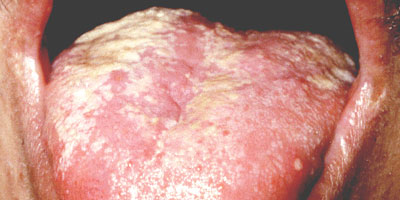|
|
|
Candidiasis
Cutaneous infection with Candida albicans causes pustule formation, erythema, and sometimes scaling. Candida grows, as do other yeasts and fungi, preferentially in a moist, warm environment.
In the mouth, where it is known as thrush, there is an intensive inflammatory reaction with white exudates. Thrush is most common in very young children and the immune-compromised. Candida is more common in patients with a compromised immune state, such as patients undergoing cancer chemotherapy, or with AIDS. Diabetes, systemic steroid therapy and systemic broad spectrum antibiotics are also associated with increased likelihood of Candida infection.
Candidiasis of the diaper area shows typical pustule formation with associated erythema. Diaper dermatitis is made worse by Candida overgrowth. It has been shown that dead Candida organisms are quite irritating and it is quite likely that many of the symptoms associated with candidiasis is caused by this irritancy.
Vaginal candidiasis can be recurrent. There is typically a white discharge. A burning sensation may be noted by the patient or their sexual partner.
Treatment
- Candida infection of the skin responds very well to topical azoles such as miconazole and clotrimazole.
- Immune compromised patients may require systemic treatment with itraconazole.
- Correction of the underlying conditions for Candida growth is also important for long term control.

Back to Dermatology Glossary - C Index |
Back to Dermatology Glossary Index
|